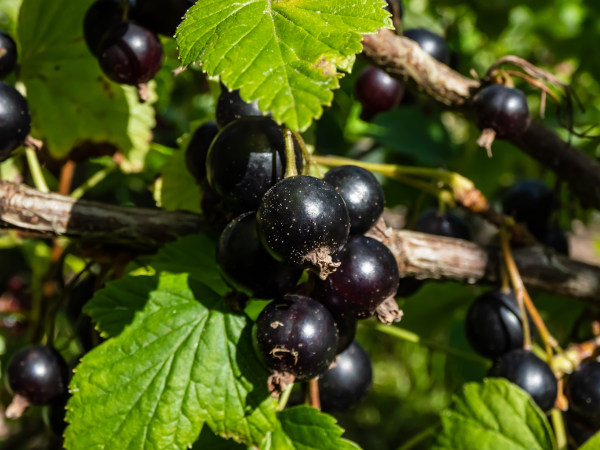How to grow Ribes
Also known as currant, ribes is a large genus of mainly deciduous shrubs found in woodland, scrub, and rocky places throughout northern temperate regions of the world. Those species widely grown by gardeners can be split into two groups – early-flowering ornamental shrubs, and edible crops. This growing guide will focus on the latter; tough, reliable fruiting plants grown for their antioxidant-rich, vitamin-C-packed berries. Species include Ribes nigrum (blackcurrant), R. uva-crispa (gooseberry), R. rubrum (redcurrant) and its white cultivated form (whitecurrant).
Though closely related, these species have subtle differences in the way they grow and are best cared for. Blackcurrants fruit on young shoots, while gooseberries and red/ white currants fruit on older wood, meaning a different pruning approach is required depending on which you are growing. Read on for all you need to know about looking after these stalwarts of the productive garden.
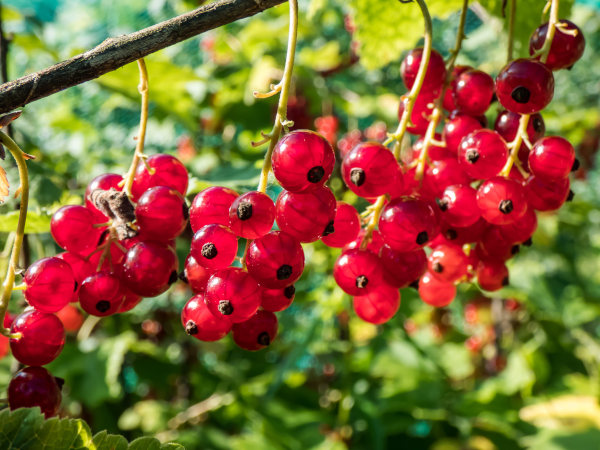
Zantedeschia is a genus of flowering plants from the family Araceae and is native to southern Africa. With a rich history dating back to the Ancient Romans, these deciduous or semi-evergreen perennials have been used as a symbol of celebration. Zantedeschia was Named after Professor Giovanni Zantedeschia, an Italian botanist.
There are two main forms of Zantedeschia: hardy and tender. Hardy forms of the plant can be grown outdoors, enjoy moist soil and full sun or partially shaded conditions - these are known as Arum lilies. Tender forms of Zantedeschia prefer being grown in containers or pots and should be brought inside over the winter - these are known as Calla lilies.
With tuberous flora in all colours from whites, yellows and oranges to deep reds and purples, Zantedeschias are not to be overlooked in any garden, as long as they have sufficient sunlight to grow in.
Ready to learn more about growing Zantedeschia? Read on for all there is to know...

Key Information
Soil pH
Position
Hardiness


Where & when to plant Ribes
Position - A sunny spot is best. Light shade is also fine though likely to result in a smaller yield with a tarter flavour. Try to avoid anywhere prone to late frosts as this can damage the flowers (and therefore impact on fruiting later in the year).
Soil - Will grow in almost any soil apart from that which is prone to waterlogging.
Flowering Period - Spring
Hardiness - Hardy, usually rated H5 (minimum temperature of -10 to -15°C), or H6 (-15 to -20°C).
For best results, plant in autumn or spring. An autumn planting can be done by those gardening in mild conditions (and broadly speaking, this is the southern half of the UK). For those liable to cold, wet winters, it is best to wait until spring (generally the northern half of the UK). Planting can also be carried out in summer though only as a last resort and with plenty of aftercare (i.e., watering), as woody plants struggle to establish well from this.
Ribes can be grown as freestanding bushes, and some of them may also be trained as space-saving vertical cordons against a wall or fence. Blackcurrants aren’t suitable for the latter, the requirement that their older stems be regularly pruned out not conducive to establishing a permanent woody framework. With freestanding bushes, allow plenty of room not only for the plant to grow but to allow good air flow and access to pick fruit; a spacing of at least 1.5 metres is ideal. Cordons are best spaced around 40-45 centimetres apart. It can be worth locating ribes in a fruit cage to protect your crop against birds, or else netting plants temporarily when the fruits are ripening.
Although they are always happier in the open ground, small, compact forms can also be grown in a large container. Go for one at least 45 centimetres wide.
How to plant Ribes
Freestanding bush
- Water well and allow to drain before planting.
- Dig the soil area over, removing any large stones and weeds and breaking up any lumps. Mix in plenty of organic matter such as manure or garden compost.
- Rake level and firm with your heels. Rake level again.
- Dig a hole twice the size of the roots.
- Place the plant in the hole, ensuring the top of the root ball sits level with the surface of the soil. To high and the roots can dry out, too low and the stem can rot. The exception to this advice is blackcurrants, which can be planted around 5 centimetres deeper than they have been previously grown to encourage the development of strong shoots from the base.
- Backfill with soil and firm in gently with your foot.
- Soak well with water.
- Mulch around the base with well-rotted organic matter such as manure or garden compost.
- At this point, blackcurrants planted during dormancy (autumn to early spring) can be cut right back to 2.5 centimetres above ground level. While this means sacrificing a fruit crop for the first year, it will result in a stronger, healthier plant in the long term.
Cordon (red/ whitecurrants or gooseberries)
- Plant as above, having first installed a system of horizontal wires spaced 40-60 centimetres apart. These can either be stretched between posts or fixed to a wall. Fix a strong bamboo cane vertically to the wires, tying in place with string or wire. Site the plant around 20 centimetres away from the wall or fence, angled slightly towards it.
Container
- For planting in containers (remember – compact forms are best for this), first choose a nice deep, large pot (at least 45 centimetres across) with plenty of drainage holes in the bottom.
- If you are using a heavy pot, it can be a good idea to fill and plant it in situ to save yourself the trouble of moving once full.
- Use a good quality potting compost with some horticultural grit mixed in, and, if not already present in the compost (check the description on the bag) some slow-release fertiliser granules.
- Start by partially filling the pot with compost; enough so that when placed on it the top of the roots sits about 3 centimetres lower than the top of the pot. Leaving a gap like this is to make watering easier and more efficient. Again, blackcurrant is the exception to this and should be positioned deeper – the top of its compost more like 8 centimetres below the top of the pot.
- Infill all but the top 3 centimetre gap with compost, firming down with your fingers then adding a little more so the plant is held tight.
- Pick up the pot (if you can!) and lightly tap on the potting bench or ground a few times to help further settle the compost around the plant.
- Soak well with water.
- A mulch with horticultural grit will look attractive and help to prevent a ‘cap’ or crust forming on the top of the compost (something container plants can suffer due to the artificial nature of their watering).

What to plant with Ribes
Currant bushes need plenty of space, so take care not to cram them in too closely with other plants. For similarly low maintenance perennial fruit crops to grow in the vicinity try raspberry, rhubarb, and blueberry.
Compact forms can be grown in conjunction with other varieties of fruit and vegetables bred especially for container growing. Our Plentiful Patio Fruits Collection is a great place to start.
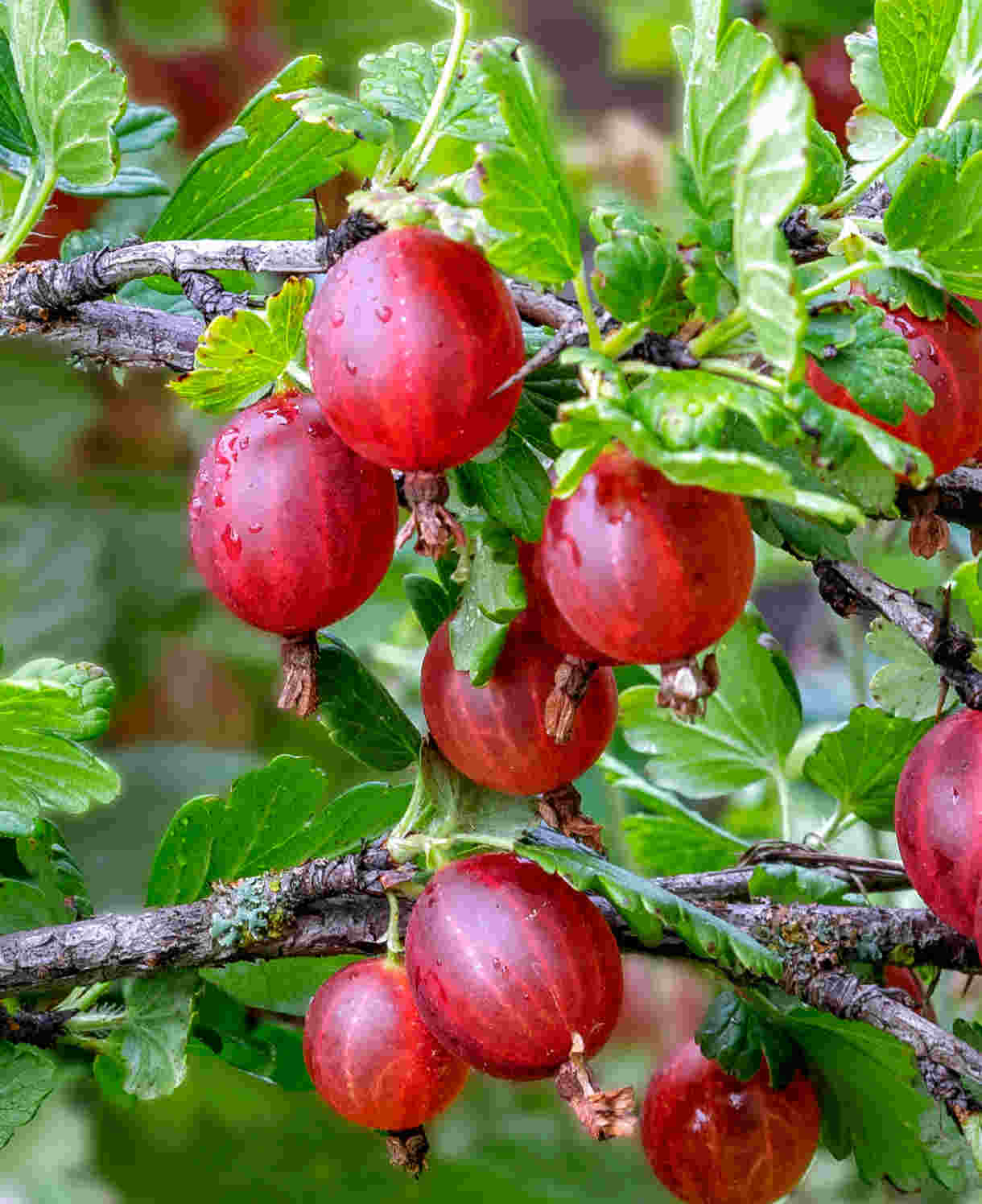
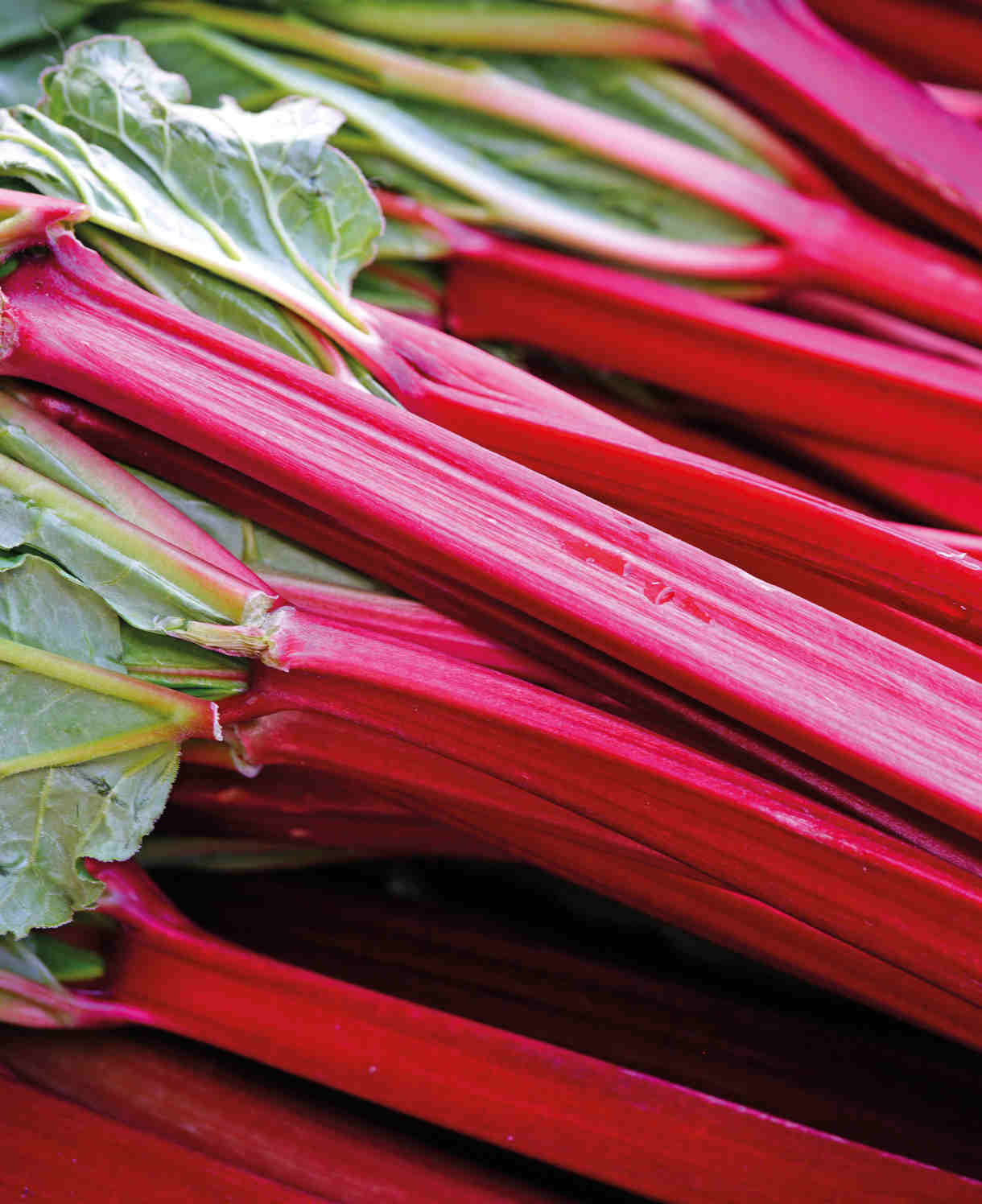
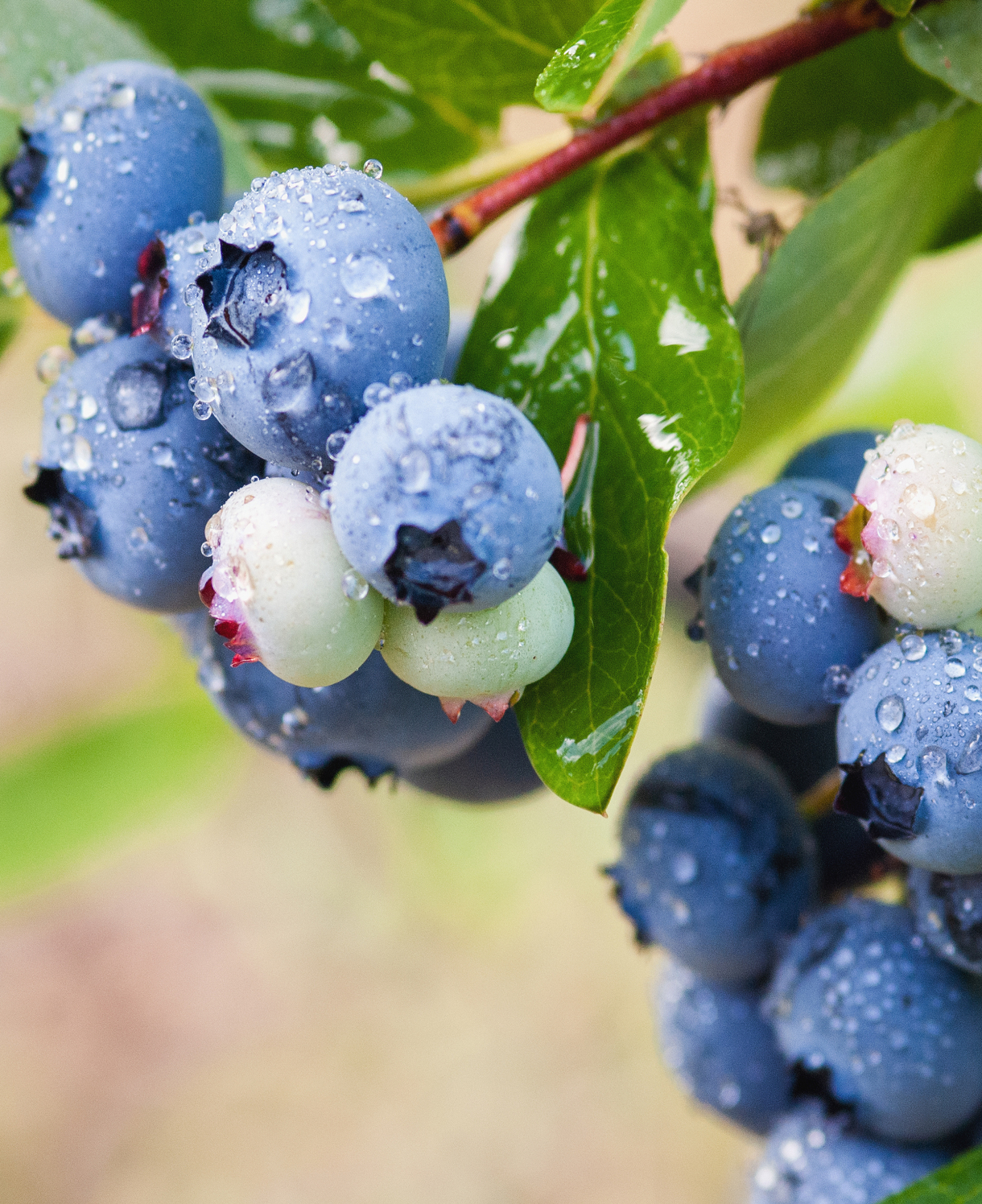
How to care for Ribes
Pruning and Deadheading
While pruning ribes isn’t essential, done regularly it keeps plants as productive as possible as well as maintaining optimal air flow and access. Different types require different approaches:
Blackcurrant – freestanding bush
The best fruiting on these plants occurs on growth made in the last few years. The aim of pruning is therefore to remove a few of the older, less productive stems to encourage new ones to shoot from the base. Done every year, this will ensure a constant supply of maximum fruiting wood.
For established bushes (around four years old), in winter cut out any thick, dark stems down to the ground with sharp loppers or a pruning saw. Try to cut just above an outward facing bud, if you can find one. Aim to remove up to a third of the bush, leaving an open structure of around 6-10 strong upright stems.
For the first three years it is best to keep pruning to a minimum, simply removing any weak or low-lying growth whilst the plant establishes.
Red/ whitecurrant and gooseberries – freestanding bush
These bear fruit on old wood and at the base of new shoots. The aim of pruning is to create an open-centred bush with around 8-10 branches, all arising from a short stem at the base known as a leg, (picture a short-stemmed wine glass!). This is best achieved in stages, starting immediately after planting:
Straight after planting – select up to five good, well-spaced stems and prune them back to around 15 centimetres. Remove all other growth, including any sprouting from lower down on the main, short basal stem.
Year 2 (late winter) – shorten any new growth on those five selected stems by half. Choose another five or six strong, well-placed branches to form the rest of the bush and prune back by half. Remove all other growth to just one bud.
Year 3 onwards (winter) – shorten any new growth on the main branches by a quarter to a half. Prune back any other shoots to one or two buds, but keep any suitable for replacing an ailing or tiring stem. Aim to remove and replace one or two each year. Take out entirely any low-lying or badly placed growth.
Red/ whitecurrant and gooseberries – cordon
You may find plants pre-pruned for this way of growing. Otherwise, starting with a one-year-old plant:
Year 1 (first winter after planting) – prune the previous season’s growth on the main leader shoot back by a half. Tie this to the vertical bamboo cane, and shorten all other shoots to one bud. Take off completely any shoots growing from the bottom 15-20 centimetres of the main stem.
Year 2 (throughout summer and autumn) – continue to tie the leader to the bamboo cane as it grows. Once the side stems have produced seven or eight leaves, nip them back to five leaves. From then on, keep pinching back any regrowth to one leaf.
Year 2 (winter) – prune last summer’s growth on the main leader stem back by a quarter, cutting above a bud on the opposite side to last year (this keeps growth as straight as possible). Prune all side shoots back to two buds. Again, keep the bottom 15-20 centimetres of the stem free of shoots.
Year 3 onwards – keep going with this summer and winter pruning until the cordon reaches the desired height, at which point the leader can be pruned back to one bud each winter. As the side shoots mature into spurs, these will need to be thinned out now and again to avoid congestion.
Watering
Ribes in the open ground should, like most woody plants, be watered regularly throughout their first growing season, aiming for consistently moist but not soggy soil. After this they are self-sufficient and need watering only in prolonged periods of hot, dry weather. Keeping an eye on this is particularly important during flowering and fruiting. Try to avoid erratic moisture levels as the fruits are swelling (i.e., allowing them to become almost bone dry then giving a huge soaking), as this can cause them to split – especially blackcurrants.
Directing water to the soil rather than wetting the foliage will reduce the likelihood of fungal disease.
Container-grown ribes have less access to moisture so need regularly watering throughout every growing season. Allowing the top couple of centimetres of compost to dry out between watering is a useful rule of thumb to help avoid overwatering. Use your finger inserted into the compost to check this, being aware that in the height of summer watering can be needed every day. From mid-autumn, the British climate tends to take over watering needs, though do remember to step in in the event of an unseasonably dry spell.
Feeding
Ribes benefit from an annual dose of TLC. In spring, feed with a high potassium general feed such as blood, fish, and bone. Covered with a mulch of well-rotted organic matter (i.e., a layer of manure or garden compost applied to the soil around the plant), this should give your ribes all the nutrients they need for the year. The mulch has the added benefit of suppressing weeds and locking in moisture.
Container-grown plants rely more on the gardener for their nutritional needs. Get off to a flying start by making sure you use a good quality compost, then during the summer months apply a liquid feed at fortnightly intervals. A ‘top dress’ each spring is also advisable; scrape off the top 5 centimetres of compost and replace with fresh (always making sure this contains slow-release fertiliser granules).
Cold Protection
Ribes are usually hardy enough to withstand a UK winter without the need for additional protection. Having said this, like all plants those grown in a container can be more susceptible to the cold. If you are in a very cold or exposed spot, in can be worth wrapping these in fleece or hessian for the winter months. As well as insulating the roots, this will also help prevent the pot cracking in the frost.
Pests and Diseases
Ribes are generally robust and problem-free. Older varieties can occasionally develop a number of viruses or mildews, though thankfully many of the newer cultivars are resistant to these. The main issue is generally birds getting to the fruit before you can. A fruit cage is the ideal solution, or temporary netting installed over plants as the fruit ripens. Just make sure to check these for trapped birds or other wildlife daily.
How to propagate Ribes
Ribes is best propagated with hardwood cuttings in winter, using the offcuts from winter pruning. Try to use young plants for this. Whilst older specimens may appear healthy, they often harbour low-level viruses which can affect the vigour of offspring.
- Select a healthy and firm section of ripe, current year growth.
- Trim to 30 centimetres, with the top cut just above a pair of buds, and the bottom cut just below a pair of buds. Make the top cut sloping, both to aid water runoff, and to remind you which end is which! Upside down cuttings have no chance of rooting.
- Spacing approximately 10-15cm apart, firm into a trench in a prepared bed outside (with well-rotted organic matter and grit dug in), the top 3-5cm of the cutting showing above soil level. Alternatively insert into containers filled with a gritty compost mix.
- Water in lightly. Place containers in a cold frame or unheated greenhouse.
- Check and re-firm trench cuttings after a frost (which can lift them out of the ground).
- Leave cuttings in place until the following autumn ensuring they do not dry out during the summer. By this point they should have rooted and can be lifted and either potted or planted out as required.
* Many plants carry Plant Breeders Rights and cannot be propagated for commercial purposes.
Common Ribes Questions
Are ribes fast growing?
Expect ribes to take between two and five years to reach full size.
Does ribes grow in shade?
Partial shade is okay (i.e., still receiving direct sun for a few hours in the day), though is likely to result in reduced flowering and fruiting. Deep/ full shade is best avoided.
How tall do ribes grow?
These are small shrubs which tend to reach 1 – 1.5 metres in height.
How and when should I harvest my ribes?
On most modern forms of black, red, and whitecurrants, the fruit on a cluster or bunch can be expected to ripen at the same time. This means you can snip off a whole bunch, rather than the fiddlier task of picking individual berries as with older varieties. If you’re making jelly or jam go for slightly unripe fruit which contains more pectin and should set much better.
Gooseberries require a slightly different approach. With these, it’s best to make two pickings a month or two apart. In June when the fruits are still green, pick every other fruit. These can be used in cooking and baking, to make things like jam, sauce, and tarts. The fruit left on the plant is then given the chance to swell and ripen fully. Harvest these in July or August when they’re soft and sweet. Take extra care as they are prone to bursting at this point.
Always harvest ribes on a dry day as wet fruit can go mouldy quickly. Freshly picked fruit can be kept in a fridge for up to three days, or in the freezer for several months.
